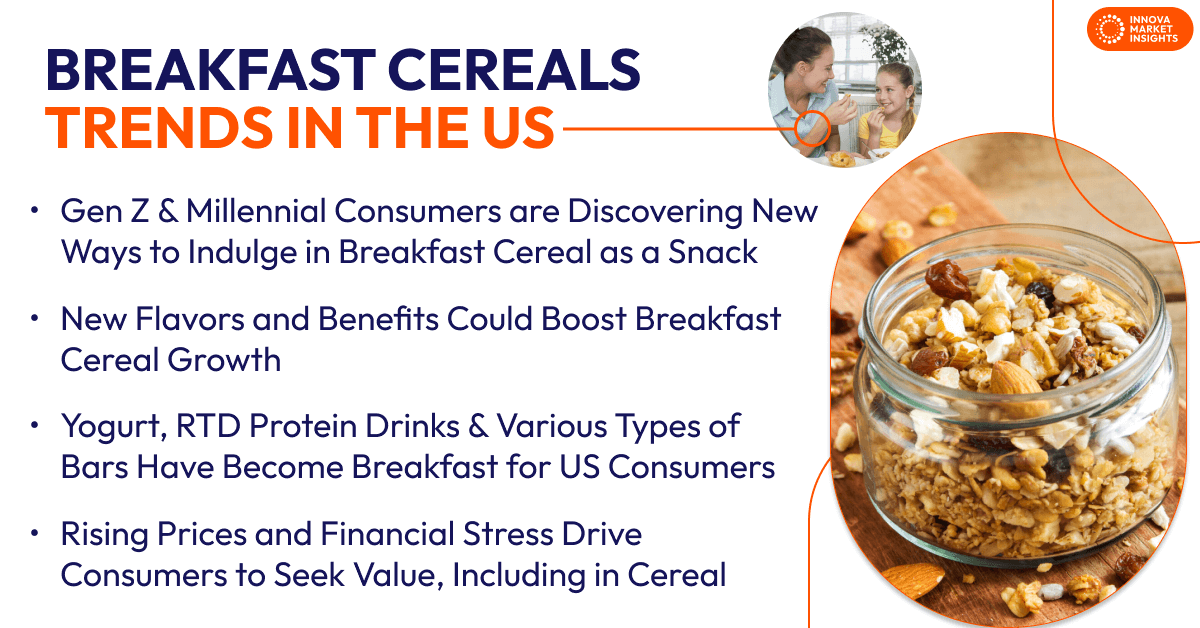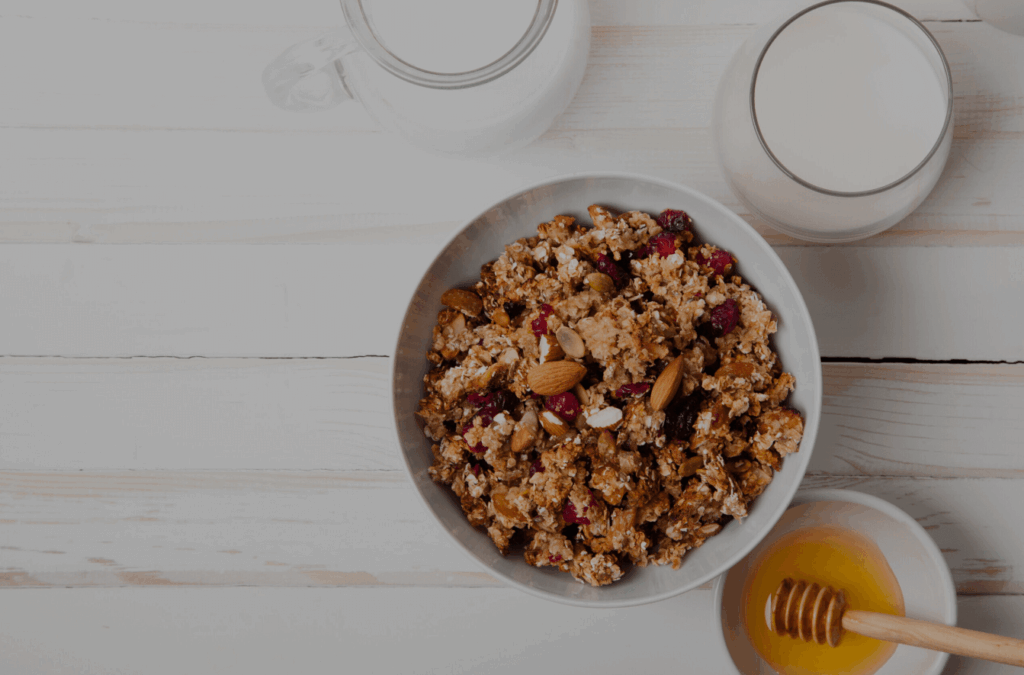June 19, 2025 – Breakfast cereals in the US consist of cold cereals and hot cereals. Cold breakfast cereals include corn cereals, rice cereals, bran cereals, granola, and other cereals that are consumed cold and with milk or milk substitutes. Cereal straws and overnight oats also are considered to be cold cereals. Hot breakfast cereals are eaten warm or hot and can include oatmeal of all types, gruel, porridge, and others.
US Breakfast Cereal Market Faces Challenges
A lot of innovation can be seen in the US breakfast cereal market, but the category still has challenges. Sales volume in cold cereals is declining while prices are going up. This is unlikely to attract new consumers or retain existing breakfast cereal users. In contrast, hot cereals are benefiting because of their association with trends around health.
Breakfast cereal in the US is locked into breakfast habits. This could be limiting the eating occasions for breakfast cereal. Breakfast itself is a habit, but breakfast space is highly competitive with a lot of players, including other food categories, brands, retailers, and foodservice.
Several cultural shifts are affecting US breakfast cereal trends. Consumers have changed their morning routine. The number of households with children has gone down. Outlets such as grocery stores, convenience stores, and dining options offer breakfast alternatives that are high in protein and suitable for on-the-go. However, cereal trends show that Generation Z and Millennial consumers in the US are discovering new ways to indulge in breakfast cereal as a snack and when eating alone. The challenge is that many are in smaller households, so overall breakfast cereal consumption still is down.
Other lifestyle changes are affecting breakfast cereal trends in the US. Diets are changing, cereal trends reveal that US consumers are snacking more, smaller portions are desired, consumer trends research show movement toward sugar reduction, and protein is popular.

Consumers Help Shape Breakfast Cereal Innovation
Breakfast cereal brands can learn by studying what influences consumers. Today’s consumers are looking for clean labels, functional benefits, and gut health. Those priorities are helping drive hot cereal. In contrast, cold cereal is fighting new breakfast patterns, expanded breakfast food options, and the lure of a high-protein breakfast. That is why breakfast cereals need to be reshaped for different types of eating, different types of consumers, and different lifestyles. New flavors and benefits could boost breakfast cereal growth.
Younger cereal eaters look for sweet and indulgent choices for breakfast. Brands that want to appeal to the younger generations can innovate with nostalgic flavors, dessert flavors, pre-portioned bowls at an affordable price point, and snackability.
Value in US Breakfast Cereals
High prices and lack of convenience can limit occasions for eating breakfast cereal in the US. Another challenging name brand breakfast cereals is consumer movement toward discounters and private label cereals as a way to get better value. Also, other products such as yogurt, RTD protein drinks, and various types of bars have become breakfast for US consumers. That is why cereal brands need to combine value, innovation, and convenience.
Excitement Around the Future of Breakfast Cereal
Exciting options exist for positioning breakfast cereal for different eating occasions and for new groups of consumers. Some areas to explore are single-serve portions, exciting new flavors, and health claims such as high fiber and healthy gut. Cereal trends indicate that young adults can be an attractive target for new cereal occasions. Breakfast cereal brands can combine wellness and indulgence by offering convenience, fortifying key nutrients, and playing with flavors that are nostalgic or experiential. It also is important to combine health and value. Breakfast cereal is seen as both healthy and unhealthy, and this has been a barrier. The key to success with breakfast cereal is to meet the functional needs of consumers, engage them emotionally, benefit health, and appeal to different generations.
Price fluctuations and stress about personal finances will continue to drive consumers to seek value, including breakfast cereal. Cereal brands can encourage pairings and mashups that combine cereal with high nutrition foods like dairy and non-dairy yogurt, dairy and non-dairy milk, bananas, and berries.
Connecting US breakfast cereal ingredients with benefits is essential for helping brands to stand out. According to consumer trends research, a solid proportion of consumers, led by Gen Z and Millennials, are looking for food with gut health benefits. Satiety also is important to consumers. Cereal trends show that fiber and protein are desirable ingredients, although functional ingredients influence a small percentage of consumers.
Sweet breakfast cereals could consider moving away from breakfast consumption since breakfast may have lost its position as the most important meal of the day. Also, indulgence can be more important than health, according to consumer trends research.
It is important for US breakfast cereal brands to get creative in flavors, tastes, and eating occasions. Potential pathways include innovation, new flavors, flavor pairings, new occasions, and mashups with other cereals and foods.
This article is based on Innova’s Breakfast Cereals in the US report. This report is available to purchase or with an Innova Reports subscription. Reach out to find out more
